My fourth yoga teacher training weekend arrived, and I was excited to learn all about organ systems, laterals, and twists. That’s a lot to talk about in one journal entry, so today I’m going to focus on twists.
What Is a Twist?
A twist is any yoga asana that involves spinal rotation. Essentially, one part of the spine rotates in a a different direction from another part of the spine. Our teacher Libby did a great job of demonstrating the difference between twisting without a bind (a muscular twist, as she called it) and twisting with a bind (she used the phrase “organic twist” to describe this action).
In a muscular twist, you rotate the spine while also supporting yourself without the assistance of a bind. Libby suggested using muscular twists as a warm up for organic twists. Here are photos of the two types of twists, so you can see what I mean:
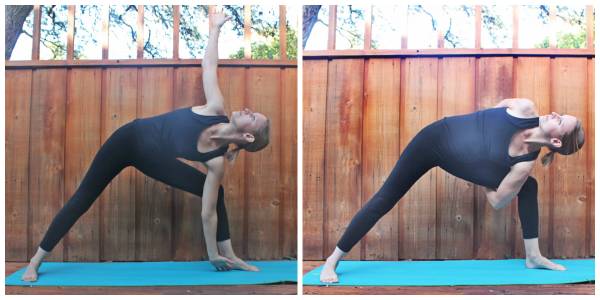
Left: Using core musculature to support the twist;
Right: Binding the twist takes pressure off the musculature for a deeper twist.
What Twists Do
The most obvious area of the body affected by the twisting motion is the spine. Yoga anatomy expert Ray Long explains what happens during a twist in his book, Anatomy for Backbends and Twists:
Twisting poses connect the lower and upper appendicular skeletons (the arms and the legs) to turn the axial skeleton (the spine and torso). This lengthens the spinal rotator muscles that attach from one vertebra to another, as well as the erector spinae, quadratus lumborum, and abdominal musculature.
That’s a lot of stuff going on in one posture. And not only do twists involve the spine and abdominal musculature, but they also compress the digestive organs. One thing that stood out to me from our session on Saturday was the way our teacher Libby described asana as “placing the organs well in space.”
She explained how twists not only improve spinal health and build core strength, but also affect the digestive organs, providing a detoxifying effect and helping the body’s involuntary digestive processes to move along smoothly, for lack of better phrasing.
DO THE TWIST: Awake & Evolve: Cycle 3 – Detox and Remove Stagnation
Some of My Favorite Twists
Here are some of my favorite twists to do after a long day of work or as a warm up for more intense twisting:
1. Easy Seated Twist (Sukhasana)
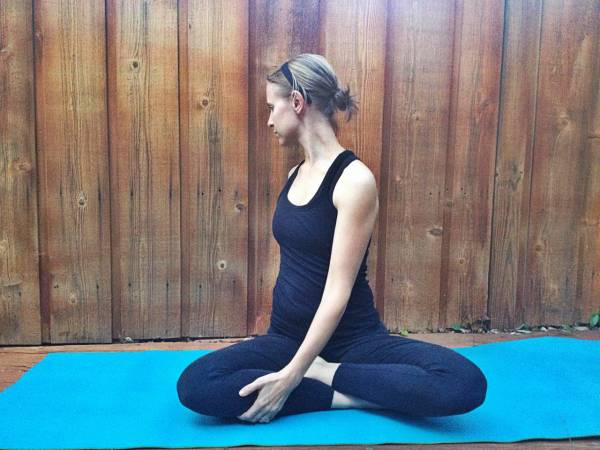
2. Marichi’s Pose (Marichyasana III)
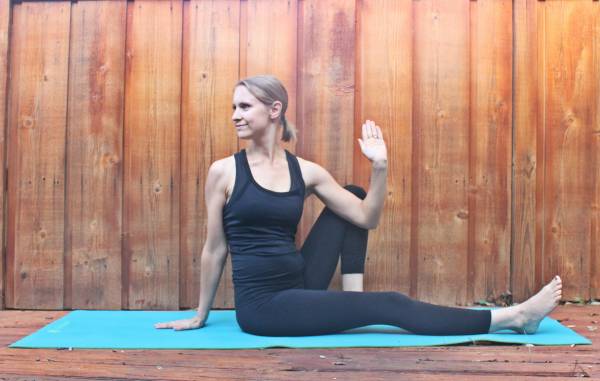 –
–
3. Half Lord of the Fishes Pose (modified)
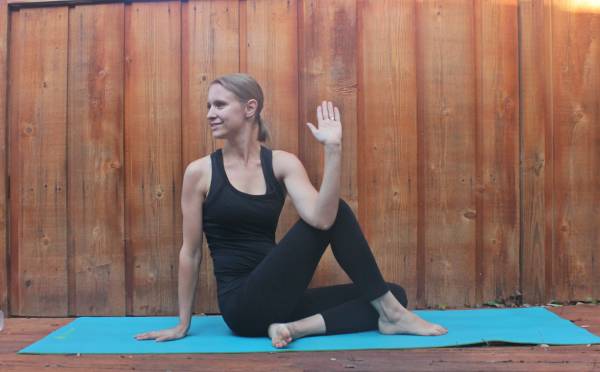
(Note: This is a less intense version that I like to use as a warm up.)
4. Supine Twist
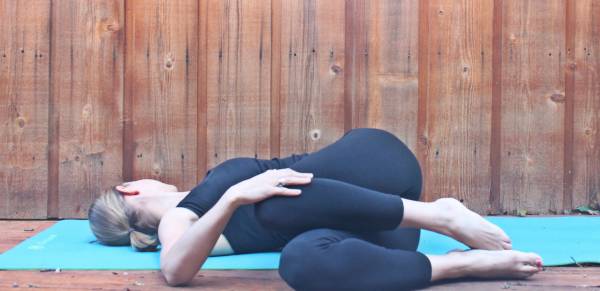
5. Revolved Wide Legged Forward Fold (Parivrtta Prasarita Padottanasana)
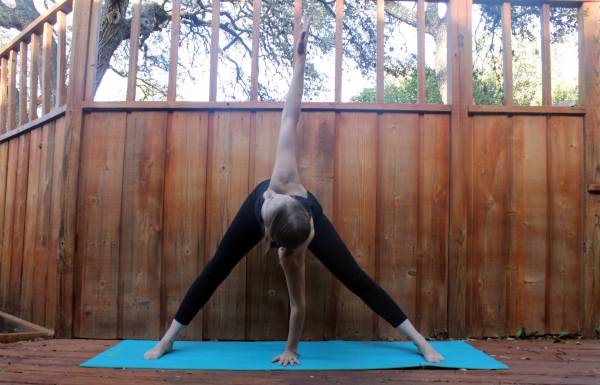
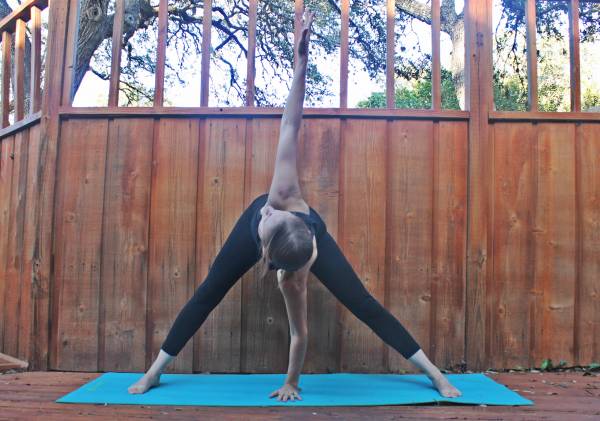
Cuing for Twists
A twist may seem straightforward, but from a physiological perspective, there’s a lot going on. So how do you provide cues for spinal rotation, breathing, and spinal extension without overwhelming your students? In her excellent book, Yoga Mind, Body, and Spirit, Donna Farhi illustrates a helpful way to think about executing a twist in the safest and most productive way:
Then you twist, the spine must elongate before it rotates, and this elongation is achieved through anchoring the body downward (usually with the legs and the sitting bones) while simultaneously releasing the spine up and following through with a reach of the head. Imagine in every twist that there is a spiral staircase running through the central axis of your body. Just as you must step up as you ascend a spiral staircase, while you inhale, elongate your back upward, and while you exhale, turn into the movement. Pause in the space between the two breaths before you begin the cycle of movement again.
Here are four cues to keep in mind when doing any kind of spinal twist:
- Breathe into it. When you inhale, focus on elongation. As you exhale, initiate the twist and draw the navel to the spine.
- Segment the motion. Instead of twisting all at once, break the movement into smaller parts as Farhi recommends. Our instructor Eduardo had us twist one third of the way, then stop to breathe before twisting for another third.
- Don’t forget counterposes. Use forward folds and side stretches to release and unwind safely after an intense twist. As a general rule, avoid sequencing three or more asanas that have the same spinal action (in this case, rotation).
- Don’t forget the neck and torso. It’s tempting to lead with your neck and head as you twist, but keep the spine in a nice line from the waist through the crown of the head. I confess I am guilty of this, and I know I’m not the only one. One thing Eduardo showed us to help was to place the hand on the inside of the knee or shin during a seated twist, instead of the outside. For people like me whose shoulders tend to rotate inward, this is a great way to keep the chest open and prevent collapse in the shoulders.
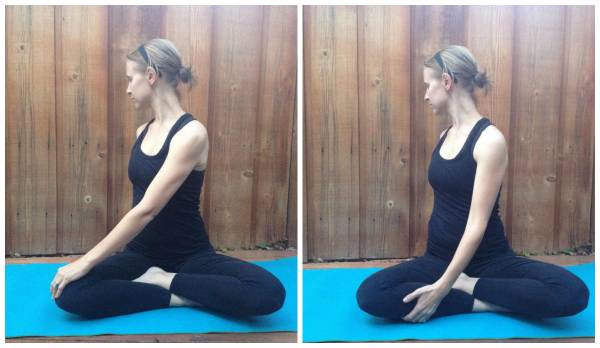
FURTHER READING: Let’s Twist Again: Why You Need Twists in Your Training
Until next time, happy twisting!
Nicole Crawford is currently completing her Yoga Alliance RYT 200 training. Read her journals to learn what yoga teacher training is like and to see what she is learning along the way.






